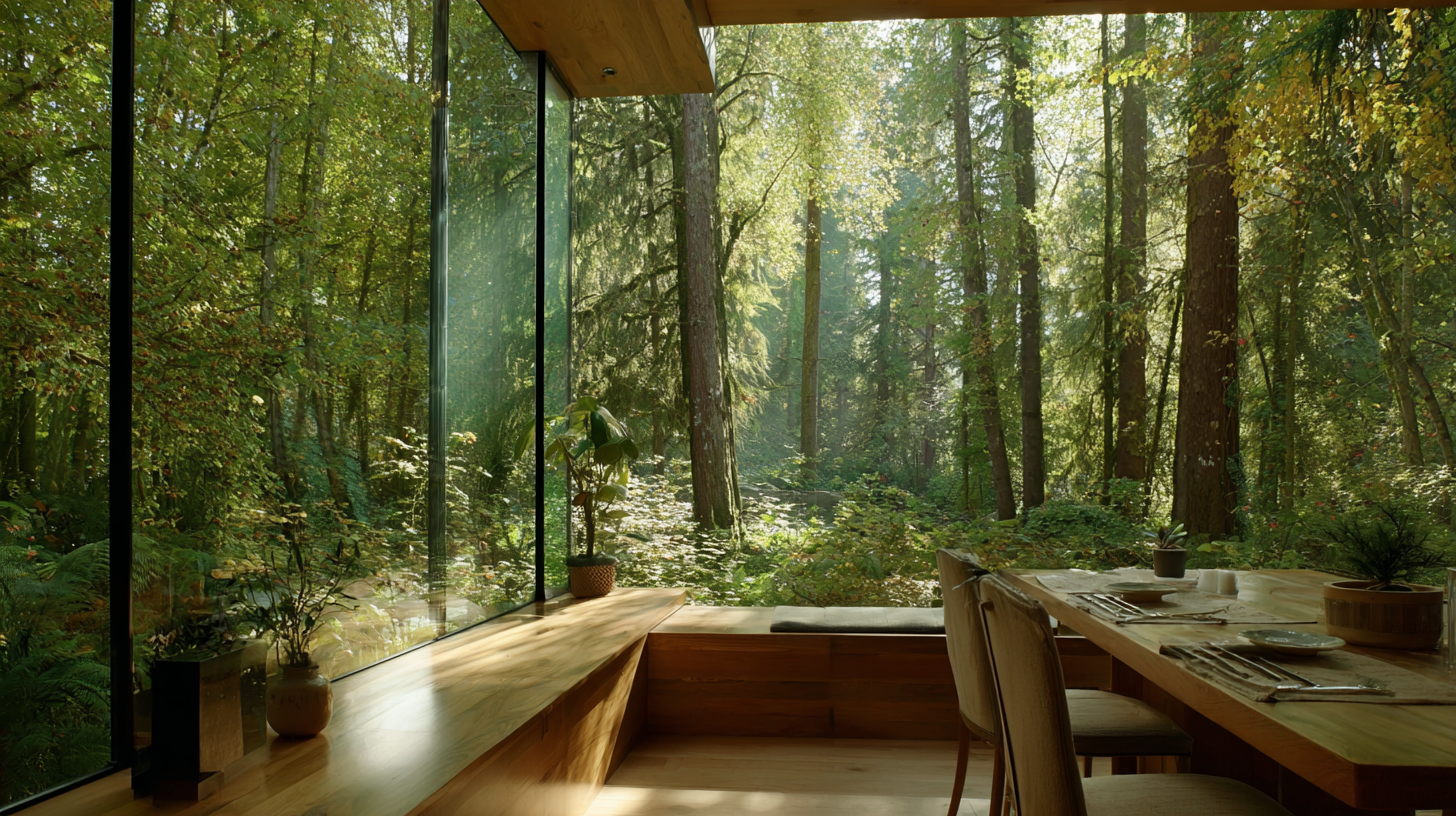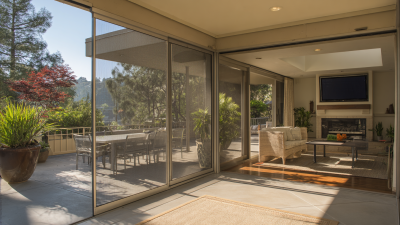Discovering Window Places: The Hidden Benefits of Natural Light in Your Home
 In our quest for a more harmonious living environment, the concept of "window places" emerges as a pivotal focal point for enhancing our homes. These unique spots, characterized by their proximity to natural light filtering through windows, offer not only aesthetic appeal but also myriad psychological and physical benefits.
Natural light has been shown to elevate mood, foster creativity, and improve overall well-being, making window places essential for a balanced lifestyle. Moreover, the strategic incorporation of these spaces can transform the ambiance of a home, allowing inhabitants to connect more intimately with nature while reaping the advantages of sunlight. By exploring the hidden benefits of window places, we can redefine our understanding of spaces within our homes, creating sanctuaries that promote relaxation, productivity, and a deep sense of connection to the external world.
In our quest for a more harmonious living environment, the concept of "window places" emerges as a pivotal focal point for enhancing our homes. These unique spots, characterized by their proximity to natural light filtering through windows, offer not only aesthetic appeal but also myriad psychological and physical benefits.
Natural light has been shown to elevate mood, foster creativity, and improve overall well-being, making window places essential for a balanced lifestyle. Moreover, the strategic incorporation of these spaces can transform the ambiance of a home, allowing inhabitants to connect more intimately with nature while reaping the advantages of sunlight. By exploring the hidden benefits of window places, we can redefine our understanding of spaces within our homes, creating sanctuaries that promote relaxation, productivity, and a deep sense of connection to the external world.
Benefits of Natural Light: Enhancing Mood and Productivity in Home Spaces
Natural light plays a pivotal role in enhancing our mood and productivity within home spaces. Studies have demonstrated that the quality of lighting significantly influences our emotional well-being and efficiency. Rooms that are bathed in natural sunlight can elevate our mood by reducing feelings of stress and anxiety. This effect is largely attributed to the body's natural response to light, which helps regulate circadian rhythms, leading to improved sleep patterns and overall mental health.
Moreover, natural light promotes a more inviting atmosphere, fostering creativity and focus. In work-from-home setups, where distractions can easily arise, optimizing lighting to include more sunlight can create a stimulating environment. Implementing biophilic design principles, which integrate natural elements into our interiors, further enhances this connection to the outdoors. By embracing natural light and thoughtful design, we can transform our home spaces into havens of productivity and positivity, ultimately benefiting our health and well-being.
Discovering Window Places: The Hidden Benefits of Natural Light in Your Home
| Dimensional Aspect | Description | Impact | Recommended Solutions |
|---|---|---|---|
| Mood Enhancement | Natural light positively affects serotonin levels, improving mood. | Increased happiness and reduced anxiety levels. | Install larger windows, use skylights, or add mirrors to reflect light. |
| Productivity Boost | Exposure to natural light can enhance focus and efficiency. | Higher levels of concentration and better performance at work or study. | Create a workspace near windows or open spaces with ample daylight. |
| Health Benefits | Natural light helps regulate circadian rhythms, promoting better sleep quality. | Improved sleep patterns leading to overall better health. | Design bedrooms with light-filtering curtains or blackout options for nighttime. |
| Aesthetic Appeal | Rooms filled with natural light feel more inviting and spacious. | Increased enjoyment of living spaces; improvement in property value. | Use light-colored paint and open layouts to maximize the feeling of space. |
The Science Behind Natural Light: Impacts on Health and Well-being
Natural light is not just a pleasant addition to any room; it plays a crucial role in enhancing our health and well-being. Studies show that exposure to natural sunlight can significantly improve mood, reduce stress levels, and even boost immune function. Sunlight triggers the production of serotonin, a neurotransmitter that elevates mood and helps us feel calm and focused. Moreover, natural light influences our circadian rhythms, promoting better sleep patterns and overall energy levels throughout the day.

To maximize the benefits of natural light in your home, consider these tips: First, keep windows unobstructed by heavy curtains or furniture to allow as much light in as possible. Second, use mirrors strategically to reflect light deeper into your living spaces, brightening areas that lack direct sunlight. Lastly, opt for lighter wall colors to enhance the brightness of your rooms, creating a more open and airy environment. By making these small adjustments, you can harness the power of natural light to create a healthier and more uplifting home atmosphere.
Maximizing Sunlight: Tips for Optimizing Window Placement in Your Home
When optimizing sunlight in your home, the placement of windows plays a crucial role. Ideally, you should consider positioning larger windows on the south-facing side of your home. This allows for maximum sunlight exposure during the day, enhancing the natural warmth and brightness of your living spaces. Additionally, using window treatments such as sheer curtains can help diffuse harsh sunlight while still allowing ample light to flow in, creating a warm and inviting atmosphere.
Another important tip is to select the right type of glass for your windows. Low-E (low emissivity) glass helps to reflect heat while allowing light to pass through, keeping your interiors comfortable year-round. Incorporating skylights or transom windows can also significantly increase the amount of natural light, particularly in areas of your home that are far from exterior walls. By strategically placing these features, you not only brighten up your home but also create a more open and airy feel that enhances overall well-being.
Natural Light and Energy Efficiency: Reducing Utility Bills with Smart Design
Maximizing natural light in your home not only enhances aesthetics but also significantly improves energy efficiency, which can lead to remarkable reductions in utility bills. According to a report by the U.S. Department of Energy, homes designed to take full advantage of natural light can reduce lighting needs by up to 80%. By strategically placing windows and using reflective surfaces, homeowners can harness solar energy effectively, thereby minimizing reliance on artificial lighting and cutting down on electricity costs.
Tips for Maximizing Natural Light:
1. Use large windows or sliding doors that allow ample sunlight to brighten indoor spaces.
2. Consider light tubes or skylights for areas that might benefit from unexpected sources of natural light, such as hallways or bathrooms.
3. Opt for light-colored walls and furnishings that reflect rather than absorb light, creating a brighter and more open feel.
Incorporating natural light through thoughtful design also contributes to the longevity of your home’s energy systems. A study by the National Renewable Energy Laboratory shows that homes with ample daylight not only improve occupant well-being but also decrease the need for heating and cooling, thus leading to further savings on energy bills. Homes that embrace this concept are more sustainable and can result in a more comfortable living environment.
Indoor Plant Growth: Leveraging Natural Light for a Greener Home Environment
Natural light plays a crucial role in creating a healthy home environment, especially for indoor plants. By strategically placing plants near windows where they can receive this natural light, you can encourage lush growth and vibrant colors. For those with lower light conditions, selecting low-light indoor plants is essential. Varieties such as snake plants and pothos not only tolerate shade but also help purify the air, enhancing your living space's ambiance.
**Tips for maximizing plant growth in low-light areas:** Consider rotating your plants occasionally to ensure even exposure to whatever light is available. Grouping plants together can also create a microenvironment that increases humidity, benefiting their growth. Lastly, using grow lights can supplement natural light, especially during the shorter days of winter. This can be particularly beneficial for plants like the coffee plant, which thrives with a bit of extra care but remains visually appealing even without producing beans.
Bringing greenery into your home not only beautifies the space but is also linked with improved mental well-being. Indoor gardening allows you to connect with nature, even in areas that aren't drenched in sunlight. By choosing the right plants and providing them with appropriate light levels, you can easily cultivate a thriving indoor garden that brings joy and positivity to your living environment.

Related Posts
-

Transform Your Home's Comfort: The Benefits of Installing Aluminum Screen Doors
-

Why Choosing Aluminum Screen Doors Can Enhance Your Home's Comfort and Style
-

The Ultimate Guide to Choosing Aluminum Storm Doors for Every Home
-

Exploring the Impact of Window Places on Indoor Air Quality: A Comprehensive Review
-

Exploring the Efficiency of Value Windows: How Energy Savings Can Reduce Your Bills by Up to 30%
-

The Ultimate Guide to Order Windows: Choosing the Perfect Fit for Your Home Project
Our Location
476 Main Street - Route 28
Dennisport, MA 02639
Business Hours -
- Mon - Fri
- -
- Saturday
- -
- Sunday
- Closed

Share On: